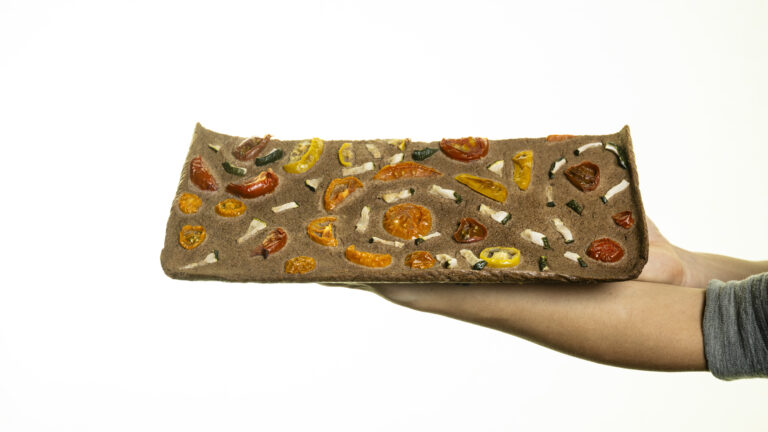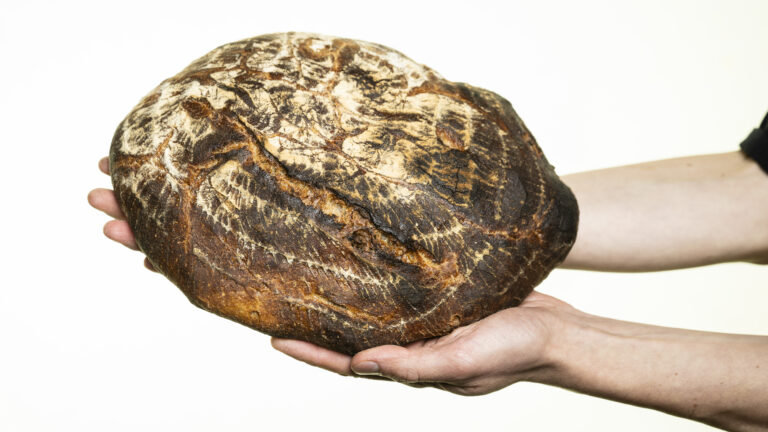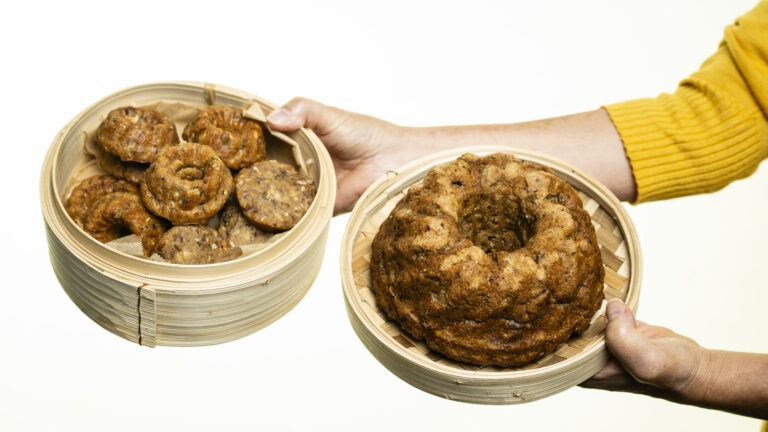Paimio River Roach Fish
By Rami Oksanen (Helsinki)
This bread recipe highlights the relationship between climate change, nutrient pollution, and the rise of cyprinids in Finland’s waters. Warmer temperatures and excessive fertiliser runoff into the Baltic Sea are increasing eutrophication, which benefits species like roach, carp and other cyprinids.
These fish, which thrive in warmer, nutrient-rich waters, can reproduce effectively and displace species that prefer cooler, clearer environments. For instance, the common roach has gained new breeding grounds as salinity decreases and the sea warms, making it an abundant, yet often overlooked, food source.
Incorporating these species into our diets not only helps address ecological imbalances but also reduces pressure on more vulnerable species and ecosystems.

Photo: Veikko Somerpuro.
Ingredients
1.2 kg organic wheat flour (Quarna spring wheat)
840 ml water
27 g salt
225 g dried roach (from the Paimio River)
5.7 g dry yeast
Method
Prepare the roach: Use the whole roach with roe, giblets, and scales. Wash thoroughly and soak the fish in a salt and butter solution for two days. Dry the roach outdoors in a breezy area for nine days, then finish drying it at 50°C in a kamado grill using oak and alder smoke.
Combine the flour, water, salt, dried roach, and yeast in a large bowl. Lightly mix until combined. Allow the dough to rest for 30 minutes, which helps with hydration and gluten development.
After, fold the dough, let it rest for 30 minutes, and fold again to build structure.
Shaping and proofing: Shape the dough into a ball and place it in a cast iron pan lined with parchment paper. Cover and let the dough rise at room temperature for about nine hours.
Preheat your kamado grill to 200°C. Bake the bread for 25 minutes with the lid on, then remove the lid and bake for an additional 15 minutes. Once baked, leave the bread to rest in the pan, covered, for another hour to allow the crumb to set.
In the Maaleipä Challenge Rami Oksanen’s Paimio River Roach Fish Bread received second honorary mention. The jury described the bread in the following way:
A special mention of the Maaleipä Challenge goes to a unique recipe that incorporates an unusual ingredient. It adds roach fish, which is increasing in numbers in Finland’s rivers because of the rise in water temperatures and the excess of fertiliser runoff in the water coming from industrial agriculture. It is a bread that thinks not only about land use but the deep connection between agriculture and the rivers and sea.
Maaleipä Recipes

Acorn Flatbread
The Acorn Flatbread by Suvi Tiihonen from Keuruun Ekokylä contains leached acorns— a not very well known food from the forest—, buckwheat flour, zucchini and tomato.

Aune’s Zero Waste Herb Bread
Aune’s Zero Waste Herb Bread is baked in Japanese-style Yudane and reuses leftover roots and other vegetables with an incredibly rich variety of nuts seeds and herbs.

Gluten Free Hemp Buckwheat Bread
Merja Teräsvuori’s naturally gluten-free Hemb-buckwheat bread is made from a special combination of locally grown hemp flour, buckwheat flour, potatoes and an assortment of seeds.

Nettle Pancake Breadlet
Nettle Pancake Breadlet is Kirsi Hakonen’s honest oven top bread with nutritious nettle together with a rich mix of flours including—hemp, barley and spelt.

Wood Bread
Baked from pettu (pine bark) flour and flavoured with acorns, Jani Anders Purhonen’s fibre-rich Wood Bread celebrates the tradition of Pettu bread and takes a stand on the biodiversity of the farmland, using ingredients from the forest that could be a key part of our diet.

Round the Baltic Sea Caraway Cake
Anna Luttinen’s Round the Baltic Sea Caraway Cake contains spelt root, organically produced apples and zucchini, as well as caraway/cumin seeds—which are incredibly nutritious


